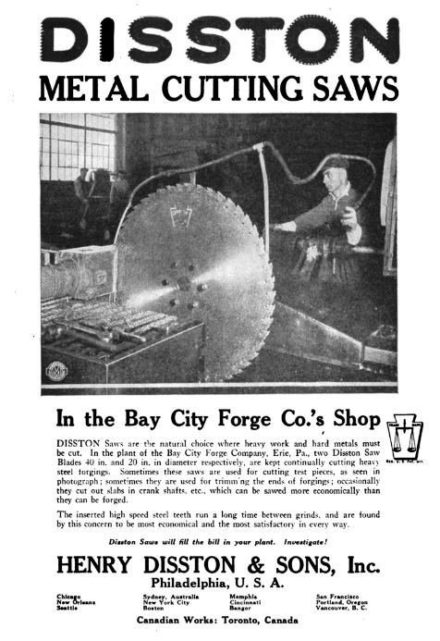
Disston Saw Works
Given the strong timber industry in Pennsylvania, particularly in the 1800s, it is no surprise that the largest manufacturer of handsaws in the United States was located in Philadelphia.
English immigrant Henry Disston began his sawmaking career in 1840. A decade later, he founded the company that later became the largest sawmaker in the world: the Keystone Saw Works. Five years later, he constructed a furnace to make his own steel, which was nearly unheard of in the U.S. at the time. His competitors had to purchase it from England, adding cost and time to the production of their saw blades. The handles were made from Applewood logs, which were aged in the open air for three years. Finishing the handles was one of the few jobs women performed (the company employed 195 women in 1916).
In 1872, Disston began building what would become the largest saw manufacturing facility in the world: the Disston Saw Works. It would take him and his employees more than 25 years to move all production to the facility. At its peak, the company employed an average of 2,500 employees, covered 64-acres, and was made up of 64 buildings.
Disston set himself apart from other business owners of the time. He was known for his environmental ethic and care for his employees. He built thousands of homes for his workmen, as well as a library and music hall. After Disston died of a stroke in 1878, the company remained a family-run business until 1955. After several owners it ended up at R.A.F. Industries of Philadelphia, where it is now known as Disston Precision Incorporated. The handsaws are no longer made, and the footprint of the facility is much smaller now, but industrial saw blades still flow from its doors.
